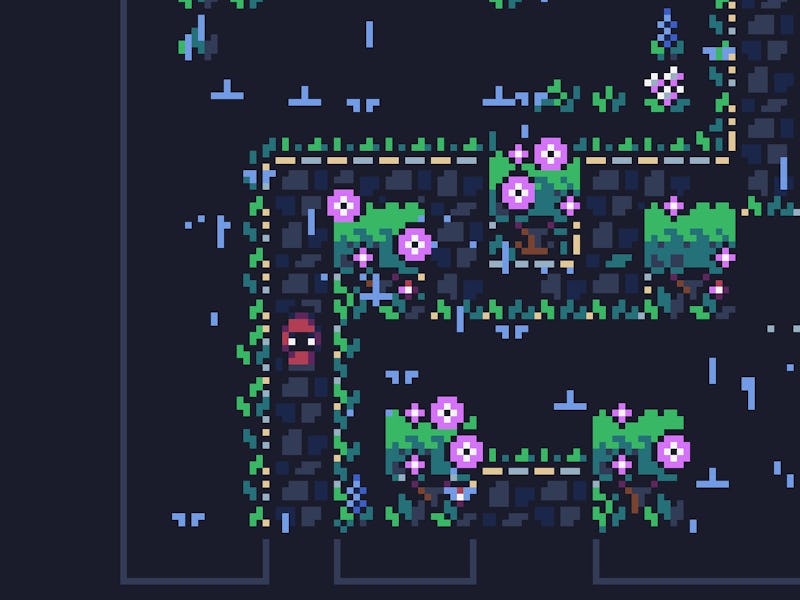Wirelight Is A Turn-Based Twist On Dark Souls Set In A Tiny, Gorgeous World
Every step counts in Wirelight.

Even as someone who’s enjoyed a fair number of Soulslike in my time, my reaction to seeing a game advertised as one at this point is usually something like, “another one?” No one really does them as well as FromSoftware anyway, and the prospect of a tough-as-nails action game no longer really appeals to me unless it brings something new to the table. All of that almost made me overlook a new demo launched on Steam, until I noticed that it’s actually a turn-based game, and its unique twist on Soulslike combat makes me glad I checked it out.
At a glance, it’s hard to make out exactly what kind of game Wirelight is. A cloaked character moves around a tiny, pixel-art world, jumping one square at a time across a cluttered grid. It could just as easily be a puzzle game as an action game, and it ends up feeling a little like both, with unique turn-based battles that make every move into a challenging brain-teaser.
Wirelight is a uniquely cerebral turn-based take on Soulslike combat.
While it’s not a roguelike, Wirelight works a bit like the classic Rogue, with turn-based movement on a grid. Each time your character moves or attacks counts as a turn, and enemies will only act after you do. What makes Wirelight feel special is the original, sometimes a bit too convoluted, way that combat works within that system.
Rather than focusing on brute strength and speed, combat is a test of wits. Enemies always show where they’ll attack or move on the next turn, and positioning yourself so they’ll bump into you will stun your opponent, as will knocking them into another enemy or the environment with your attack. Each enemy also starts with a shield, which you can break by stunning them, making them vulnerable to a deadly blow. Since your character starts with just a single health point, trading blows is never an option. Instead, you’ll need to use careful positioning to bait enemies into moving into you or setting themselves up to be knocked into the scenery, then swoop in to defeat them.
It’s a pretty clear system in theory, but in practice, Wirelight piles on complications. Some enemies can attack several squares in front of them, others get an extra move after every attack, and still others can hit in all directions. When there are even two or three enemies on screen, juggling their movement and attack patterns can become overwhelming, and they have a habit of boxing you in so you can’t escape. The environment, too, makes things difficult, as Wirelight is set in a cramped city full of crumbling buildings and abandoned cars to make evading attacks even more difficult. It’s honestly a lot to take in, and it took me a few stupid tries to even begin to understand the system, but the more it clicks, the more I’m enjoying its utterly unique challenge.
Wirelight’s combat is difficult but extremely satisfying.
At first, all you have on your side are a basic attack, a charged version that takes two turns to activate, and a dash that moves you two squares. Using any of these takes stamina, which is where the Souslike bit comes in. Stamina is extremely limited at the start, and making sure you have enough to pull off a coup de grace on a stunned enemy or dash away from an attack is a major part of Wirelight’s strategy. Before long, though, you start collecting passive upgrades and active tools to make things easier, which strengthen your character and give you greater control over how you and your enemies move.
These upgrades are scattered all over Wirelight’s drowned city, and exploring to find them is just as much of a treat as using the advantages they give. I couldn’t tell you a single thing that’s going on in the world of Wirelight, but its setting is illustrated with gorgeous pixel art, full of atmospheric details from flooded roadways to unidentifiable machines that add an air of mystery begging to be unraveled. There’s nothing restful about the game’s combat, but exploring the city’s streets between encounters is peaceful and melancholy enough that the quiet moments are just as interesting as the battles. Wirelight is a true surprise, and one that I’m eager to see more of when the full game launches later this year.